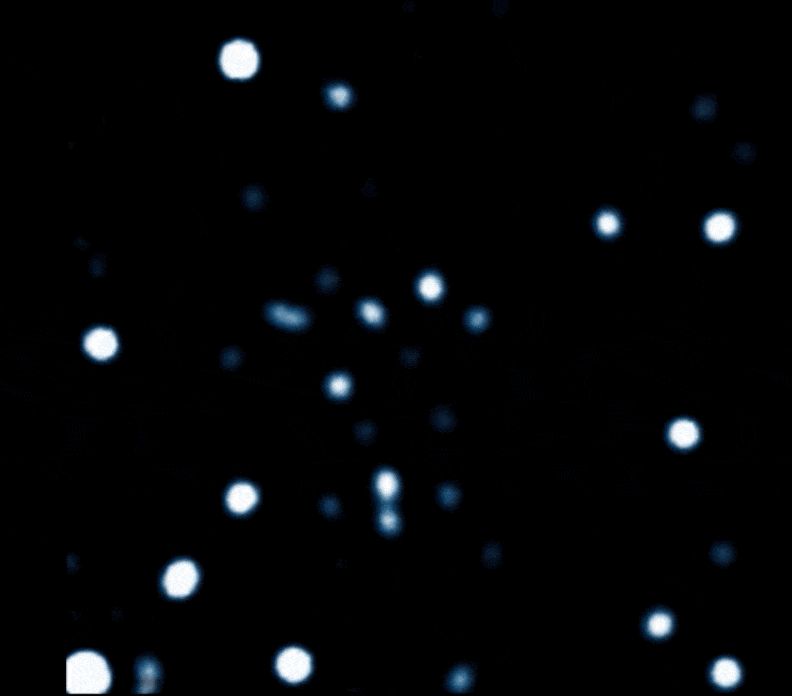
How do you make a black hole visible? Astronomers have spent 20 years photographing a star near the Milky Way’s central supermassive black hole and see the star dancing around Sagittarius A*.
The star S2 can be seen in the center of the photo. The star is located at a distance of 26,000 light-years from Earth. In the time-lapse you can clearly see that the star is accelerating at a certain moment and swinging around the black hole. At that time, this star has a speed of 25 million kilometers per hour. That is about 7,000 kilometers per second, or 3% of the speed of light. Suppose you were to travel from the earth to the sun at this speed, a one-way journey would take only six hours.
The timelapse below was captured by ESO’s Very Large Telescope (VLT) and was published in 2018. The black hole is not visible in the photo. However, if you follow the star S2, you know exactly where this black hole lurks.
It is the first time that scientists have been able to test Albert Einstein’s general theory of relativity near a black hole. “Einstein’s general theory of relativity predicts that the orbit of one object is not closed to another, as predicted by Newton’s gravitational theory, but is precessionally moving forward,” said researcher Reinhard Genzel. This means that the location of the point of closest approach to the supermassive black hole is shifting with each orbit. This creates a rosette pattern, which is easy to see in this video. “Now we have detected this effect in the motion of a star orbiting the compact radio source Sagittarius A* at the center of the Milky Way. This observational breakthrough strengthens the evidence that Sagittarius A* must be a supermassive black hole 4 million times the mass of the Sun.”
Our sun also revolves around the core – and therefore also the central black hole – of the Milky Way, but our parent star takes much longer to do so than the star S2. Every 230 million years, the sun completes one complete circle. The last time Earth was at its current position in the Milky Way, the first dinosaurs walked on Earth’s surface.
In the animated video below, the orbit of the star S2 is shaded in yellow. You can also see the orbits of the other stars.
Scientists hope in the future to discover stars that fly even closer to black holes. “If we’re lucky, we might even be able to see stars so close that they ‘feel’ the spin – the spin – of the black hole,” says Andreas Eckart from the University of Cologne. “That would take relativity testing to a whole new level.”
Source material:
“ESO telescope sees star dancing around supermassive black hole” – ESO
Image at the top of this article: Artistic impression of S2 at the black hole
